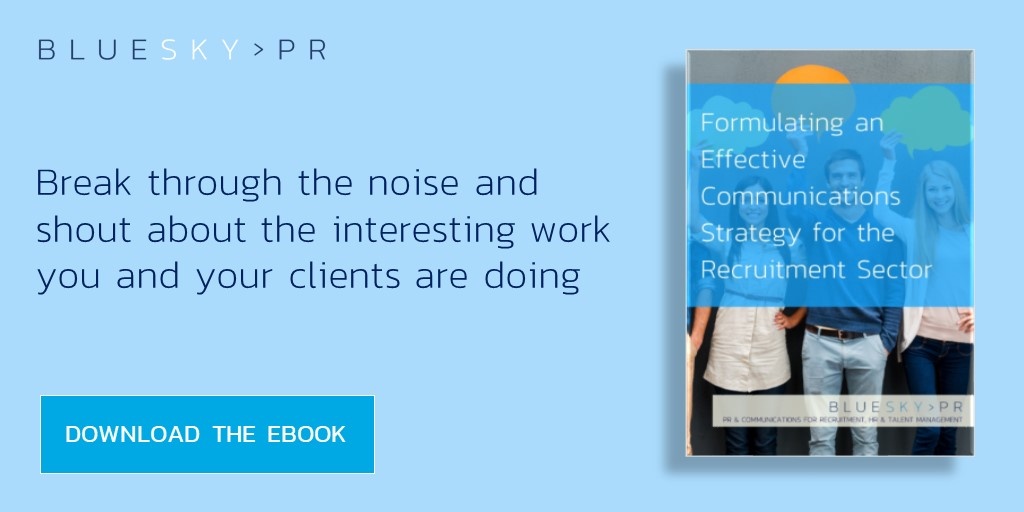Get ready to challenge what you thought you knew about PR and equip yourself with the truth.
PR (or Public Relations) misconceptions and myths run rampant. But it’s time to debunk these fallacies and shed light on the truth.
Myth #1: It's all about the press release
A quick Google search reveals that a worrying number of people think PR actually stands for press release.
First off, let's address that misconception. It doesn’t. As I’ve noted above, PR stands for public relations.
While press releases are useful for spreading your brand's message, they are just one tool in the PR toolbox. To truly establish yourself as a thought leader in your industry, you need to explore various PR tactics. Consider writing white papers, publishing articles, conducting surveys, hosting events, and more. Diversify your PR approaches to maximise your impact. Remember, it's not just about getting your company name out there, it's about showing your expertise and creating meaningful connections with your audience.
Three practical tips on how to create engaging white papers:
- Know your audience: Before diving into writing your white paper, take the time to understand your target audience. Ask yourself: Who are they? What are their pain points and challenges? What kind of information would be most valuable to them? Use this insight to shape the content and tone of your white paper.
- Do your homework: Conduct thorough research to gather data and statistics that support your main points. This will help establish credibility and provide valuable insights for your readers.
- Make it engaging: While white papers typically have an educational and informative tone, don't be afraid to inject some personality and engage your readers. Incorporate real-life examples, case studies, and anecdotes to bring your points to life. This helps readers relate to the content and see practical applications for the information you're sharing.

Myth #2: PR professionals spend all day wining and dining
It’s not Ab Fab.
Maybe in the past, PRs could form bonds with journalists by taking them to the pub and buying them a bottle of bubbly, but that’s, unfortunately, no longer the case.
Building relationships with journalists takes more than a few drinks. And, frankly, in the era of ‘productivity’ that we live in, it’s considerably more challenging to convince a journalist to take time out of their time-short day. Sorry folks.
Instead, it's essential to approach journalists with well-crafted pitches and compelling stories that align with their interests. Build strong connections through meaningful interactions, be it through personalised emails, social media engagements, or professional networking events. Be genuine and invest time in nurturing these relationships. Remember, it's not about schmoozing; it's about offering value to journalists and respecting their busy schedules.
Here are three practical tips on how to reach out to journalists effectively:
- Personalise your pitch: Journalists receive countless pitches every day, so it's essential to make yours stand out. Start by researching the journalist you're reaching out to. What topics do they typically cover? What kind of stories do they enjoy writing? Use this information to craft a personalised pitch that speaks directly to their interests.
- Leverage social media: Follow journalists who cover your industry and engage with their content by liking, commenting, and sharing their articles. This helps establish your brand as a thought leader and puts you on the journalist's radar.
- Keep it short and sweet: Time is a journalist's most valuable asset, so it's essential to be concise. Keep your pitch short and to the point. Use bullet points or a numbered list to break up the pitch and make it easy to scan. Be sure to include a clear and compelling subject line that grabs the journalist's attention and entices them to read more.

Myth #3: Getting publicity is easy
If only! Spoiler - it’s not.
Journalists receive many emails daily. Even interesting stories may be ignored if they are not presented properly. Using a subject line that reads, ‘Thrilling new cutting edge announcement about game-changing super product,’ will result in them hitting delete.
Without strong relationships and well-crafted pitches, gaining substantial media coverage can seem impossible. It's crucial to understand the nuances of the industry.
- Craft compelling subject lines that pique curiosity without resorting to clickbait tactics.
- Tailor your pitches to each journalist's preferences and research their beats thoroughly.
- Take the time to build relationships and foster connections with reporters who cover your industry.
- Use tools like media databases to identify the right contacts and tailor your approach accordingly.
Myth #4: All press is good press
We’ve all heard it. This is one of the most popular myths about PR.
Ask SeaWorld whether it believes ‘Blackfish’ was good press, or how Ratners fared after its owner described its products as ‘total crap’. Or why not ask VW about its public image after the emissions scandal?
The answers will be overwhelmingly negative. SeaWorld recorded plummeting revenues (84% in 2015 alone) after the damaging documentary was released and saw visitor numbers cut in half.
Meanwhile, Ratners, whose owner suggested that his products were “cheaper than an M&S prawn sandwich, but probably wouldn’t last as long,” saw its valuation drop by a rather considerable £500m following his gaffe.
And VW ended up offering six year warranties to anyone who would take them. Oh, and paying somewhere in the region of $25bn to customers in the US.
Make no mistake, bad press is not always good press.
Bad publicity can have serious consequences for your brand's reputation and bottom line. In an era where information spreads like wildfire, it's crucial to maintain a positive image and proactively manage your brand's messaging to prevent potential crises. Remember, it takes years to build a good reputation, but only seconds to destroy it.
Two practical suggestions to help you handle a PR crisis like a pro:
- Build a PR crisis management plan: Start by considering potential crises that could arise in your industry or within your business. Brainstorm worst-case scenarios and develop a proactive strategy to address each one. Create clear roles and responsibilities, ensure everyone knows their specific tasks and is ready to act swiftly should a crisis occur.
- Monitor brand mentions: Use tools like social media monitoring platforms, Google Alerts, and media monitoring services to set up alerts for your brand name, key executives, and relevant industry keywords. These alerts will notify you whenever your brand is mentioned online. Respond to both positive and negative comments promptly and thoughtfully. By addressing concerns and acknowledging feedback, you can show customers that you genuinely care about their experiences.

Myth #5: You can't measure PR and it is therefore pointless
Wrong.
In the past it may have been hard to measure ROI, but today, with numerous analytical tools at our disposal, this isn’t an issue. You can:
- Leverage tools like Google Analytics to track website traffic, user behaviour, and conversions.
- Monitor key metrics like engagement, reach, and sentiment in your media coverage.
- Set clear goals for your PR campaigns and use KPIs to measure success.
- Evaluate the impact of PR on lead generation, brand perception, and customer acquisition.
By linking PR efforts to tangible outcomes, you can demonstrate its value to stakeholders and refine your strategies for better results
If you’re looking to drive increased traffic to your website, for example, Google Analytics can identify how and when people accessed your site, and their journey through the different pages, which allows you to measure the demand for your content. If you want to focus on your social media channels then an increase in followers and engagement is a clear indicator that you’re getting ROI.
There’s no excuse for not measuring the success of your PR activity.
An example of the true value of PR that comes to mind, is an opportunity we secured for a client operating in the Oil & Gas arena in a leading sector publication. A decision-maker at a major firm seeking assistance read the article and was impressed by the expertise displayed in it. He called our client, they went on to fill the role and secured fees valuing over £100k. Here you can see, the result is tangible.
So, there you have it – the top 5 myths about PR debunked!
Heard any others? I’d be happy to write a follow up.
Looking for a PR agency with friendly team who are more than happy to tell the truth? Give us a call +44 (0) 1582 790700.
Originally posted September 2017, updated October 2023


Authors: Bruce Callandar and Jennifer Wright

Post Your Comment